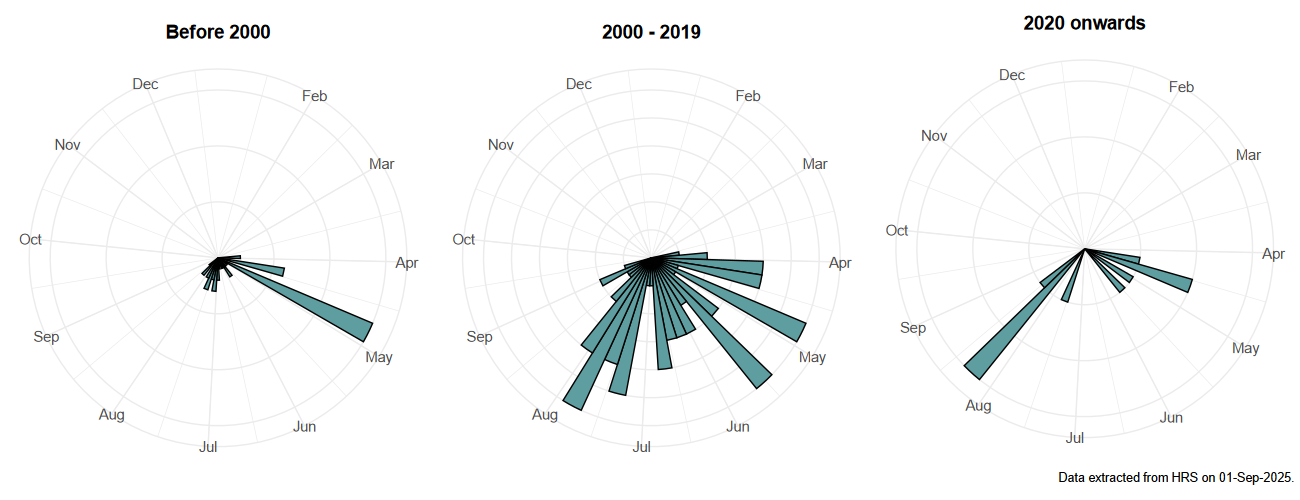Ferdinandea ruficornis (Fabricius, 1775)
Identification
Identification difficulty = 4. ![]()
![]() according to Ball & Morris, 20241
according to Ball & Morris, 20241
Biology
The larva filter feeds on yeasts and bacteria in sap runs on a variety of trees. F. ruficornis is thought to be one of a suite of species that are to some degree associated with the workings of the Goat Moth Cossus cossus, but it is unlikely that this is an obligate association as the fly does occur at localities where the moth has not been found. Adults are very difficult to locate, but are occasional flower visitors.
Flight period
The following plots show the number of unique records per week excluding those reported to be of immature stages.

Status
Lower risk (Nationally scarce) - Ball & Morris, 20022. Notable - Falk, 19913. Vulnerable (RDB2) - Shirt, 19874.
Distribution
This is largely an English species with just a single record from Wales and few Scottish records. It is mainly southern, almost entirely confined to a line between the Humber and the Ribble, but with a single outlier in North Yorkshire. Many records come from Malaise traps.

Trends
The following plots show the Frescalo TFactor vs year and a map of the rescaled frequency (all records) for the species.
-
Ball, S., & Morris, R. (2024). Hoverflies of Britain and Ireland. WILDGuides (3rd ed.). Oxford: Princeton University Press. ↩
-
Ball, S., & Morris, R. (2014). A review of the scarce and threatened flies of Great Britain. Part 6: Syrphidae. ( No. 9). Species status (pp. 1–130). Peterborough: JNCC. ↩
-
Falk, S. (1991). A review of the scarce and threatened flies of Great Britain. ( No. 39). Research and Survey in Nature Conservation (pp. 1–194). Peterborough: NCC. ↩
-
Shirt, D. (Ed.). (1987). Red Data Books: 2. Insects. Peterborough: NCC. ↩